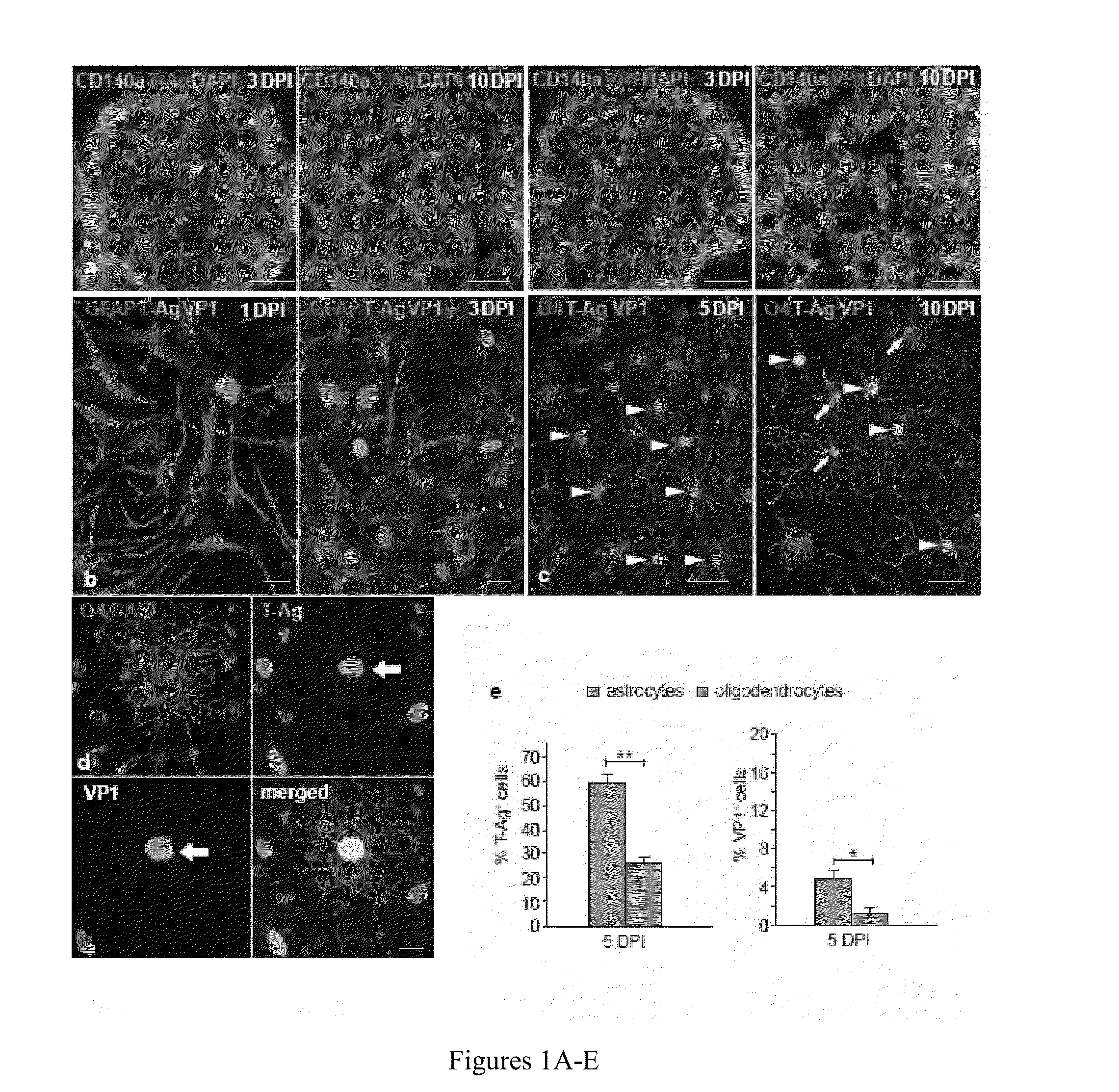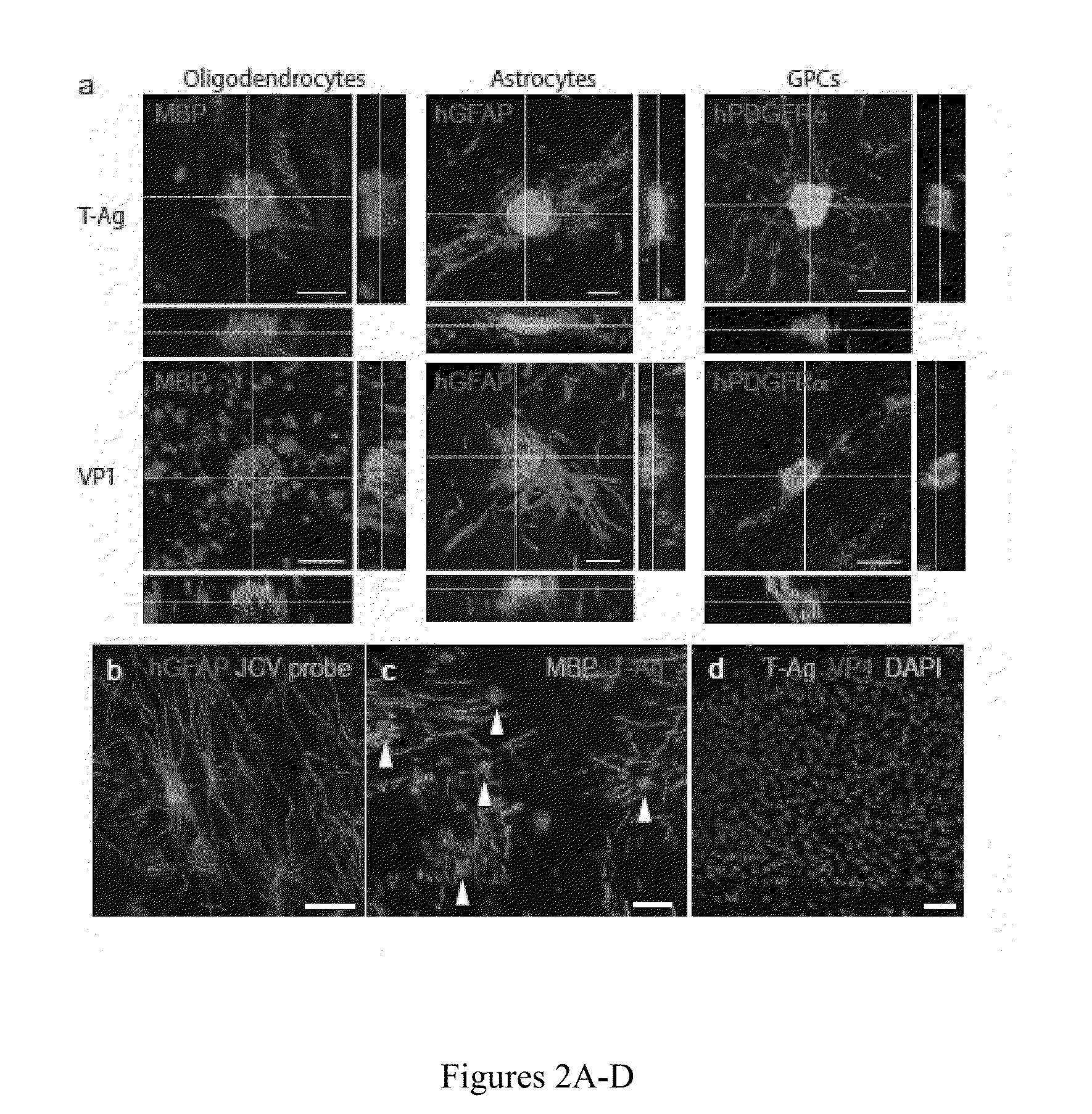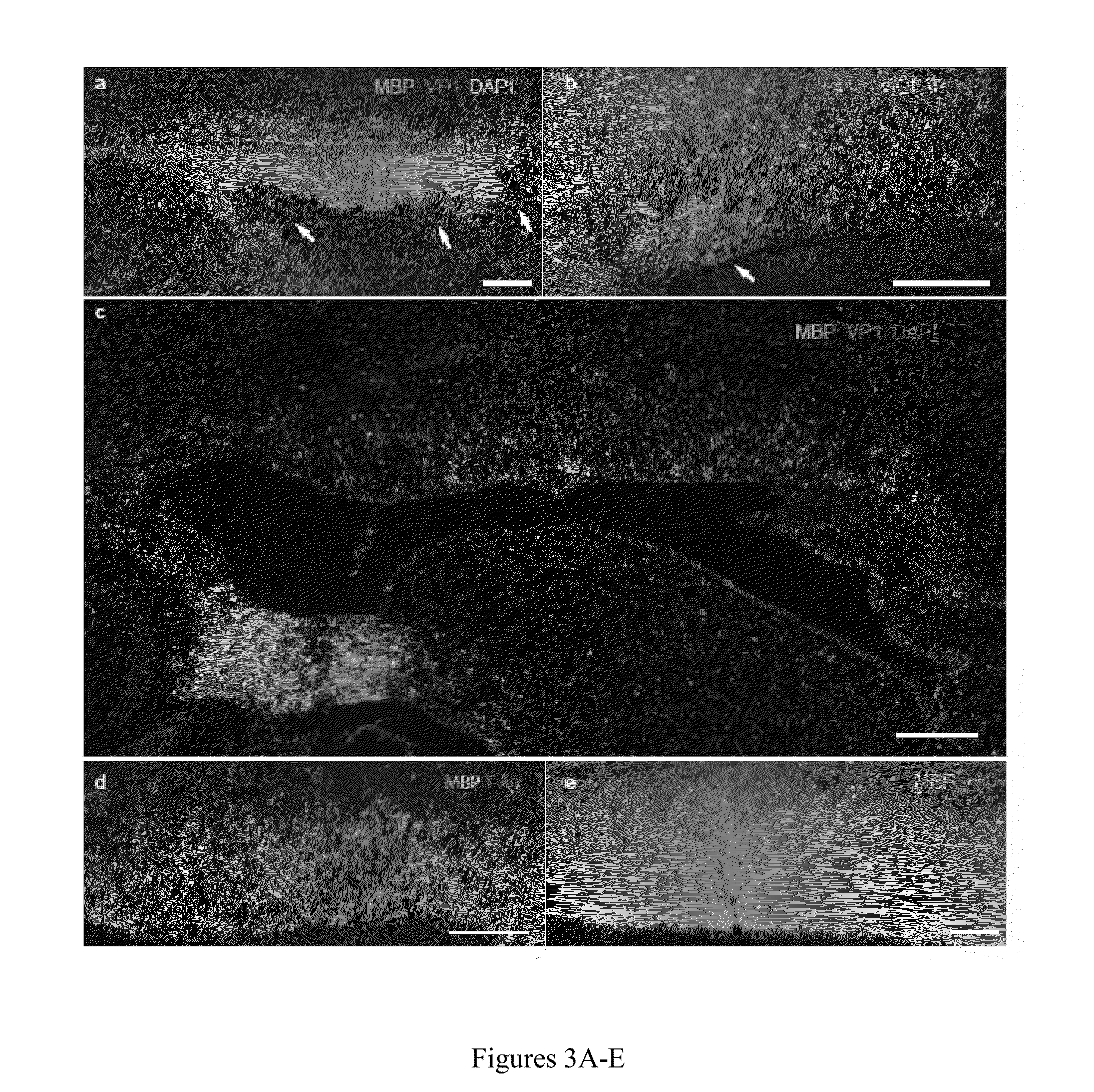Human glial chimeric model for drug candidate assessment in human gliotrophic viral infections and progressive multifocal encephalopathy
a drug candidate technology, applied in the field of human glial chimeric model for drug candidate assessment in human gliotrophic viral infections and progressive multifocal encephalopathy, can solve problems such as the establishment of informative animal models
- Summary
- Abstract
- Description
- Claims
- Application Information
AI Technical Summary
Benefits of technology
Problems solved by technology
Method used
Image
Examples
example 1
JCV Efficiently Infected Astroglia and their Progenitors in Culture
[0096]Although PML has traditionally been viewed as a disease of oligodendrocytes, both astrocytic and glial progenitor infection have been reported in vitro (Major et al., “Human Fetal Astrocytes in Culture Support the Growth of the Neurotropic Human Polyomavirus, JCV,”J Neuropathol. Exp. Neurol. 48:425-436 (1989); Monaco et al., “Progenitor-Derived Oligodendrocyte Culture System From Human Fetal Brain,”J. Vis. Exp. e4274 (2012); Seth et al., “JC Virus Induces Nonapoptotic Cell Death of Human Central Nervous System Progenitor Cell-Derived Astrocytes,”Journal of Virology 78:4884-4891 (2004); Radhakrishnan et al., “JC Virus-Induced Changes in Cellular Gene Expression in Primary Human Astrocytes,”J. Virol. 77:10638-10644 (2003); Messam et al., “Lineage Pathway of Human Brain Progenitor Cells Identified by JC Virus Susceptibility,”Ann. Neurol. 53:636-646 (2003), which are hereby incorporated by reference in their entire...
example 2
JCV Initially Infected Astroglia In Vivo
[0097]Since astrocytic infection was surprisingly more robust than that of oligodendrocytes in vitro, it was next sought to define the relative phenotype-selective tropism and infectivity of JCV in vivo. Since JCV infects only human glia, human glial chimeric mice were established so as to provide an in vivo model for JCV infection and JCV-dependent demyelination. To this end, neonatal immunodeficient and myelin-deficient shiverer mice (rag2− / −×MBPshi / shi) were injected with 2×105 human GPCs, delivered as 105 cells / hemisphere in 2 intracallosal injections per side of 5×104 cells each. Myelination by neonatally-engrafted human GPCs has been well-characterized in these human glial chimeric mice, which first achieve dense callosal and capsular myelination only after 3 months of age (Windrem et al., “Neonatal Chimerization With Human Glial Progenitor Cells Can Both Remyelinate and Rescue the Otherwise Lethally Hypomyelinated Shiverer Mouse,”Cell S...
example 3
JCV Infection In Vivo Resulted in Demyelination within Human Chimeric White Matter
[0100]To better understand the means by which demyelination occurs in JCV infection, the patterns of demyelination noted in JCV-infected human glial chimeric brains were examined. By 4 weeks after JCV infection, focal regions of demyelination and infection-associated astrogliosis were noted in the forebrain white matter of infected mice, typically in discrete foci abutting the callosal wall of the lateral ventricle (FIG. 3A-B). Importantly, areas of demyelination were associated with dense aggregations of VP-1+ astrocytes. VP-1+ oligodendroglia were rare, despite overt oligodendrocytic loss and demyelination (FIG. 3A). By 12 weeks post-infection, demyelination was widespread and associated with regions of focal gliosis embedded within demyelinated loci. At these longer postinfection time-points, diffuse hypomyelination of the callosa and capsules of infected chimeric mice was noted (FIG. 3C-D). Oligode...
PUM
| Property | Measurement | Unit |
|---|---|---|
| thick | aaaaa | aaaaa |
| time | aaaaa | aaaaa |
| morphology | aaaaa | aaaaa |
Abstract
Description
Claims
Application Information
 Login to View More
Login to View More - R&D
- Intellectual Property
- Life Sciences
- Materials
- Tech Scout
- Unparalleled Data Quality
- Higher Quality Content
- 60% Fewer Hallucinations
Browse by: Latest US Patents, China's latest patents, Technical Efficacy Thesaurus, Application Domain, Technology Topic, Popular Technical Reports.
© 2025 PatSnap. All rights reserved.Legal|Privacy policy|Modern Slavery Act Transparency Statement|Sitemap|About US| Contact US: help@patsnap.com



